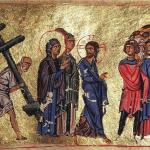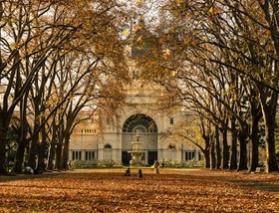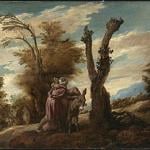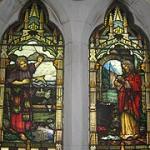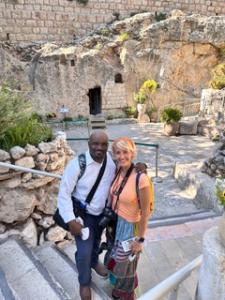
My wife and I were blessed to go with our 17-year-old son, Jordan, on a trip to the Holy Land to honor him as he completed school. This visit was the trip of a lifetime, as we saw and walked in places where our Savior Jesus Christ lived during his time on this earth. Bethlehem, Jerusalem, and the cities near the Sea of Galilee were places of interest and excitement. But we were quickly to learn that although physical, temporal experiences in these lands can be faith promoting, events that took place there are life changing, as we learn from God through the Holy Spirit.
Church or Manger in Bethlehem
We learned that biblically significant places we toured are not necessarily where the designated events took place. Some places were destroyed in wars. Many are now covered by buildings, drawing attention to events but not showing what they were like when the even We ts took place.
Many of the places we visited did not seem to engage us in the sacred nature of their history. We did not regret our time viewing beautiful tributes to Christ’s life, but we needed more.
We understood that the truth and meaning of Christ’s birth, ministry, crucifixion, and resurrection are much more important than where they (might have) happened.
As we visited the Church of the Nativity in Bethlehem, we did not find what our understanding of Christ’s birth had led us to expect. Instead of a humble stable or cave, we saw a beautiful, ornate church with intricate architecture and decoration.
Going through the church was an amazing experience, but without the sacred feelings I thought I might have. We found it difficult to imagine what this place would have looked like at Christ’s birth.
With the large groups of people, we found it even more difficult to get quiet time to think and ponder. As we moved down into the area believed to be His specific birth place, we patiently waited our turn to kneel and touch what remains.
As we knelt and each placed our hand on the star over the area, I took a moment to think of the circumstances in which Joseph, Mary, and Jesus experienced the birth. I thought of how humbling this would have likely seemed and how difficult it must have been for them.
A spirit of gratitude came over me, and I took the sacred moment to think about how I might show my gratitude for my Savior more in my life. I realized that whether this is the exact place where it happened isn’t nearly as important as my gratitude that it did happen.
My wife mentioned very spiritual feelings as she saw people who spoke different languages and came from different backgrounds and different parts of the world all coming to one location. Each of their lives had likely been touched by Jesus Christ, the Savior of the World. The place brought us all together, but the sacred work of the Savior had really brought us together.
The Sacred Events, in Lost Locations
In Jerusalem two different locations are given for Christ’s crucifixion and burial. We visited both the Church of The Holy Sepulchre and The Garden Tomb, each with the claim of being the place where Christ was crucified and buried; the contrast was striking.
The Church of the Holy Sepulchre, a massive structure in the Old City of Jerusalem, stretches across the suggested crucifixion hill and nearby tomb. Its intricate, delicate chandeliers and ceiling artwork are beautiful. 1
But it was difficult to relate the sacred events to this location because thousands of people and stunning visual effects distracted. I struggled to find peace there; finally for a few moments I could block out the noise and focus spiritually.
We were blessed to spend a minute praying on the Stone of Unction, where Jesus was said to be anointed and prepared for burial. 2 We saw a simple tomb that could be similar to the one where Jesus lay. Seeing that simplicity without the decorations and noise gave me a moment of peace. I left thinking the sacred events might have happened here, but most important to me was that they happened.
From the beginning of our visit, the Garden Tomb was much more peaceful. Being outside, there were fewer people and no ornate fixtures. Because this site was simple, we found it much easier to imagine Mary seeing Jesus in this place for the first time after His resurrection.
We wondered which place the sacred sacrifice was completed. Perhaps it was neither. As I pondered these things, I was blessed with the understanding that what matters most is that it happened—not where.
I won’t have a faith crisis if I don’t know the exact spot where Jesus was buried. I know what happened and why. No location dispute will interfere with that testimony.
I have more faith after my trip, even though I can’t identify all sites and conditions. My personal relationship with my Savior and my understanding from the Holy Spirit have affected me more.
To Peter, Jesus taught the importance of spiritual over physical knowledge. “Blessed art thou, Simon Bar-Jona: for flesh and blood hath not revealed it unto thee, but my Father which is in heaven.”
Physical sites of spiritually important happenings gave me a better understanding of biblical events. But of supreme importance is the sacred knowledge I receive from our Heavenly Father through the Holy Spirit.
I know Jesus is the Christ and the Savior of the world. His birth, life, death, and resurrection actually happened, and for that I will be eternally grateful. 3


